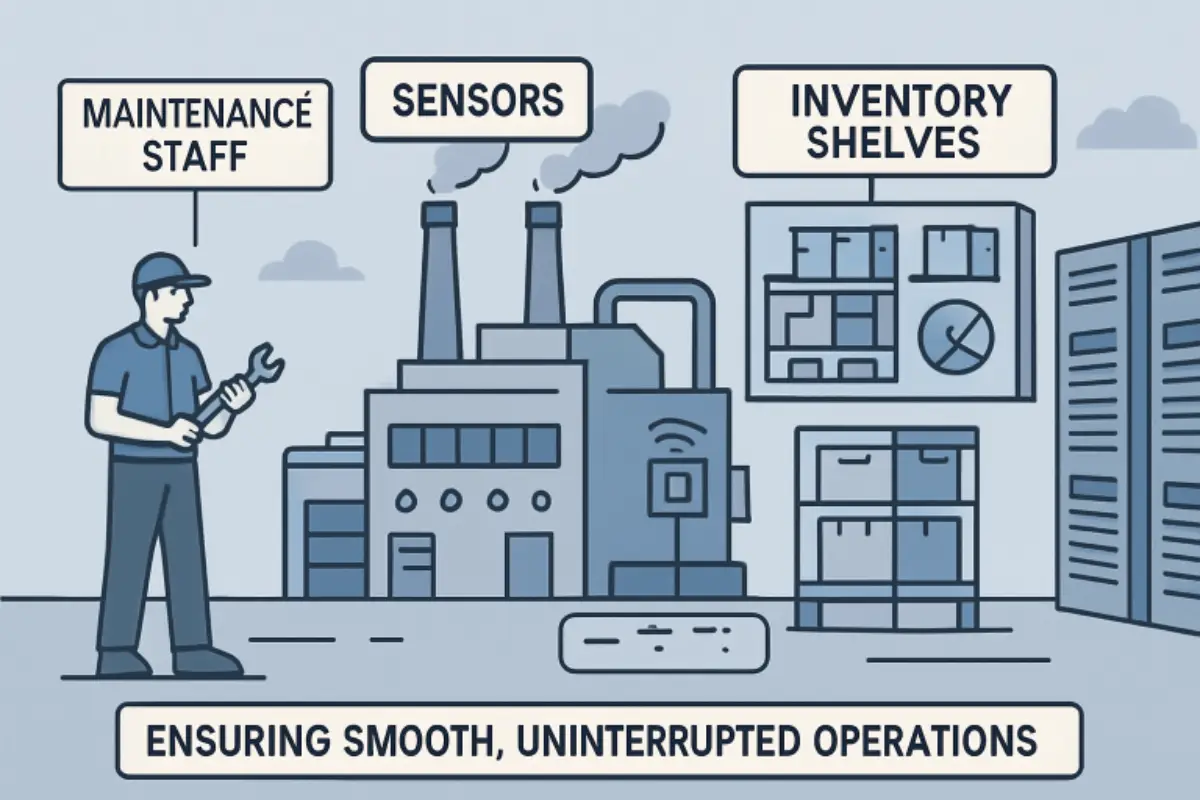Best Practices for Predicting and Preventing Downtime
Unplanned downtime is a substantial risk for modern organizations, resulting in lost revenue, hindered productivity, and negative brand impact. In today’s fast-paced business environment, being proactive about downtime is no longer optional—it’s essential. Adopting comprehensive strategies will ensure greater reliability and continuity for organizations looking to minimize disruptions and safeguard operations. To learn more about advanced uptime solutions and industry best practices, visit this external resource.
Maintaining uptime isn’t just about reactive fixes; it’s about intelligent planning, optimization, and empowering staff to respond effectively. Successful organizations rely on cutting-edge technology, disciplined maintenance routines, and proactive process improvements to prevent downtime before it disrupts productivity. Establishing this culture of preparedness goes a long way in reducing operational risks and maximizing output.
The right blend of predictive analytics, workflow enhancements, and employee readiness is the backbone of resilient operations. Below, you’ll discover a systematic approach to predicting and preventing downtime, backed by actionable steps any organization can implement.
By following these strategies, you can ensure seamless operations and a competitive edge in your field. The following best practices span technical, operational, and human elements. Integrating them across your organization can mean the difference between costly interruptions and a reputation for reliability.
Contents
Implement Predictive Maintenance
Modern predictive maintenance harnesses data analytics, sensors, and machine learning to spot warning signs before equipment failure occurs. With predictive maintenance, sensors constantly monitor variables such as temperature, vibration, and electrical currents, feeding information into advanced analytics systems.
If anomalies or deviations from standard patterns are detected, these systems send alerts so maintenance teams can intervene preemptively. This approach cuts down on unplanned downtime, extends equipment life, and reduces maintenance costs. According to IBM’s industry resources, organizations leveraging predictive strategies often report up to a 25% reduction in maintenance costs.
Schedule Regular Maintenance and Updates
Routine maintenance and timely software or firmware updates are critical for sustained uptime. Neglecting these basic tasks often leads to technical debt, outdated infrastructure, and a propensity to sudden failures or vulnerabilities. Create a predictable schedule for upgrades, patches, and inspections, and communicate it clearly to all affected departments.
Performing this work during planned low-activity periods minimizes operational interruptions. Prioritizing upgrades, especially for mission-critical systems, helps organizations avoid potential disruptions caused by outdated technology.
Invest in Employee Training
Technology alone cannot prevent downtime—well-trained employees are just as crucial. Training programs should focus on technical competencies related to equipment and systems, problem-solving, and crisis management.
Routine refresher courses prepare teams for common and unexpected scenarios, reducing error rates and improving incident response times. Cross-training, where employees learn multiple operational roles, adds flexibility and builds organizational resilience during staffing fluctuations or unexpected absences.
Optimize Inventory Management
Availability of spare parts and critical components can make or break downtime prevention strategies. Integrated inventory management systems use real-time data to ensure essential items are always on hand, streamlining ordering and reducing administration. Proactive approaches—such as the Just-in-Time (JIT) inventory model—help balance stock levels and operational readiness, ensuring resources are neither overstocked nor depleted.
Leverage Data and Analytics
Collecting and analyzing machine and process data provides powerful insights for preventing downtime. Real-time analytics platforms track key performance indicators (KPIs) and send early warnings about anomalies or inefficiencies, allowing immediate corrective action.
Artificial intelligence and machine learning models further enhance these efforts by identifying subtle trends indicating wear, misalignment, or emerging faults, long before a human operator could detect a problem. Continuous data analytics fosters a predictive culture that keeps organizations ahead of disruptions.
Streamline Workflow Processes
Operational bottlenecks often lead to unplanned downtime if left unaddressed. Continuous process improvement—through strategies such as Lean and Six Sigma—eliminates unnecessary steps, aligns resources, and emphasizes value-added activities. Start by mapping the end-to-end process to identify delays, then engage staff in brainstorming solutions that remove barriers. Digital collaboration tools and automation also help teams coordinate more effectively, reducing the risk and impact of downtime events.
Develop Effective Emergency Response Plans
Despite robust preventative measures, emergencies such as cyberattacks, power outages, or supplier disruptions are still possible. Organizations that develop and regularly test comprehensive emergency response plans are best positioned to recover quickly. Response plans should clearly outline roles, responsibilities, backup procedures, and escalation paths.
Regular drills and scenario-based exercises ensure that everyone reacts with confidence and precision when disaster strikes, reducing downtime and its associated costs. Including up-to-date documentation and accessible backup systems strengthens your defense against unexpected threats. By adopting these best practices, any organization can substantially reduce downtime events and their negative impacts.
Every element contributes to operational resilience, from predictive maintenance to skilled teams and responsive inventory management. With the right strategies in place, companies decrease downtime, enhance their reputation, and maintain a sustainable competitive advantage.

